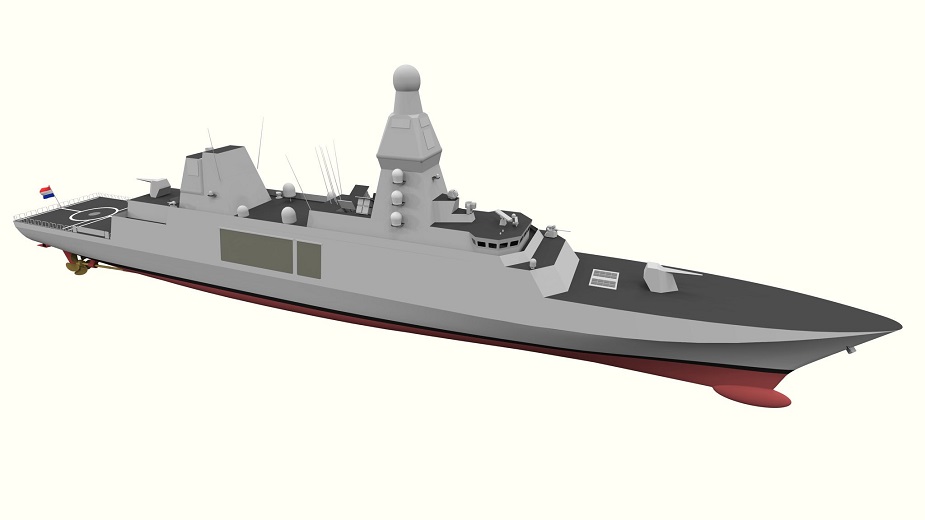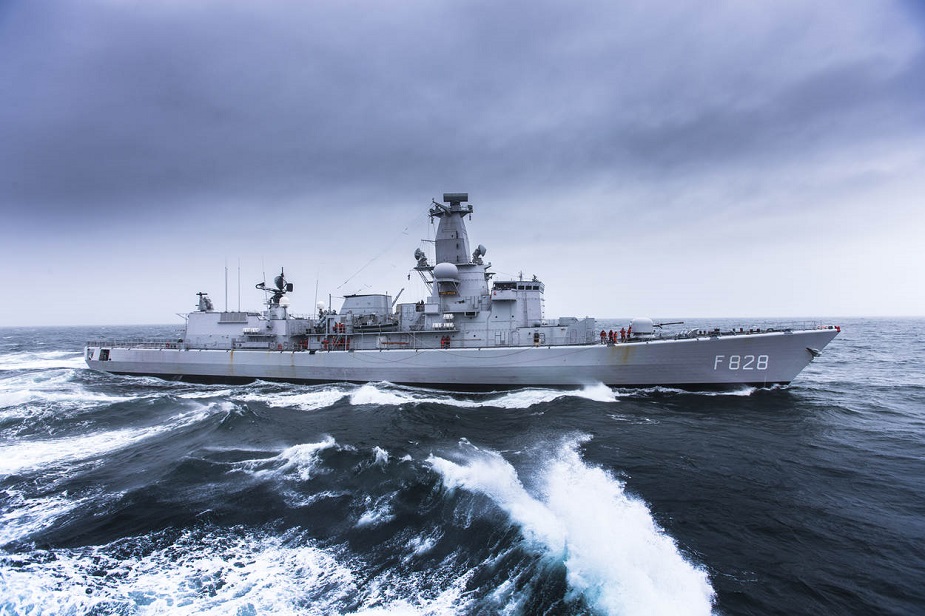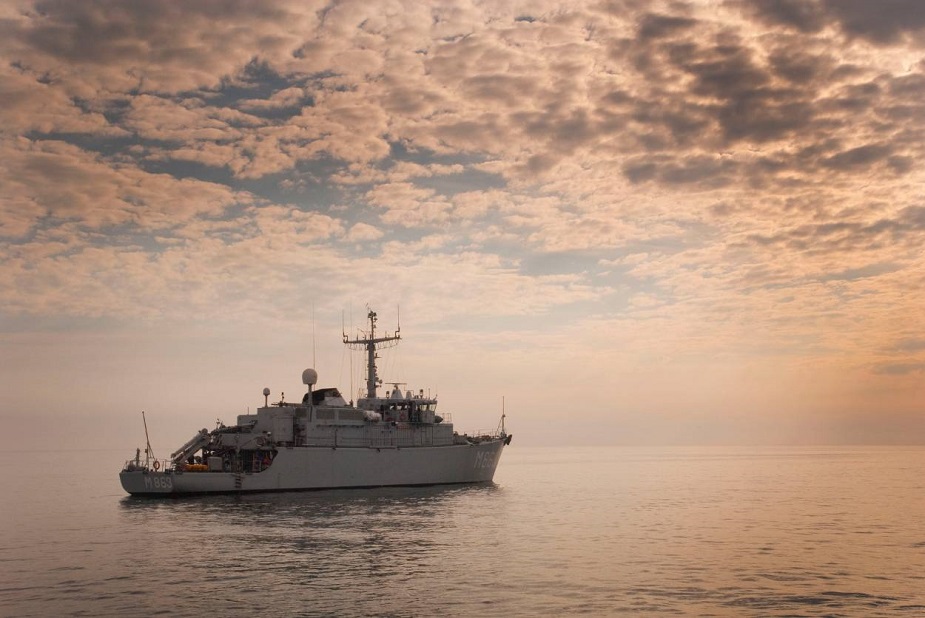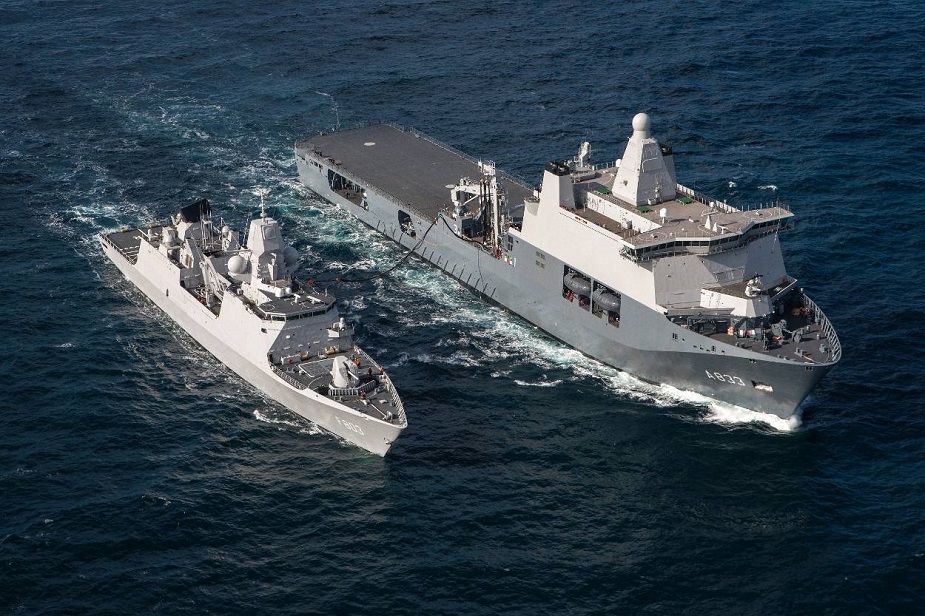Pending parliamentary approval, the Royal Netherlands Navy (RNLN) is set to procure a second support ship, two M-frigates replacement and six mine countermeasures (MCM) vessels. The frigates and MCM vessels are new designs under development with Belgium. According to the RNLN, Secretary of State for Defence Barbara Visser informed these wishes by letter to the House of Representative on May 3,2018.
 Artist impression of the future M-frigate replacement.
Artist impression of the future M-frigate replacement.
M-frigates Replacement
According to the RNLN, the end of the life of the two M-frigates ((Karel Doorman-class of multi-purpose frigates F831 HNLMS Van Amstel and F828 HNLMS Van Speijk) is nearing. They are less able to cope with current and future threats, their systems are outdated and spare parts are becoming difficult to obtain, with the consequence of disproportionately high maintenance costs.
Frigates are the backbone of the navy and their replacement is therefore essential. Because of their strength, they ensure safety at sea, defense of their own territory and that of allies and unrestricted sea transport. Where the air defense and command frigates (LCF / De Zeven Provinciën-class) specialize in air defense, the M-frigates excel in anti-submarine warfare (ASW). And the latter is a capacity that NATO has a great need for. In addition to combat operations, frigates are used for several other missions including: terrorism, drugs and piracy control and disaster relief.
The construction of a complex ship like a frigate takes more than 7 years. The first new frigate is expected to be operational from 2025 onwards.
 The M frigate HNLMS Van Speijk during exercise Joint Warrior in Scottish waters (April 2014).
The M frigate HNLMS Van Speijk during exercise Joint Warrior in Scottish waters (April 2014).
The Dutch Ministry of Defence started design studies for the M-frigates replacement in 2013. The new frigates are again set to fulfill a general purpose role with ASW as its specialty. Since the Royal Netherlands Navy deploys only six frigates in its fleet, the new surface combatants have to be able to perform well in all areas. This means that the vessels will be fitted with Standard Missile 2 or ESSM-projectiles. The builder will be local shipyard Damen Schelde Naval Shipbuilding. It was also announced that these frigates will be fitted with an integrated mast by Thales Netherlands. In December 2016, defence Ministers from Belgium & the Netherlands Signed an MoU for the Common Procurement of Vessels: It was then agreed that for the replacement of the so-called M-class frigates Netherlands would take the lead while Belgium would be leading the MCMV program.
 HNLMS Vlaardingen in the Baltic Sea during the international exercise Baltops 2012.
HNLMS Vlaardingen in the Baltic Sea during the international exercise Baltops 2012.
MCM vessel replacement
The RNLN fleet has 6 Alkmaar-class (Tripartite class) MCM vessels. These ships were designed in the 1980ies and they are reaching the end of their lifespan. According to the Dutch navy, they are increasingly unable to detect modern sea mines. The deteriorated security situation increases the probability of sea mine presence and there are still many un-exploded and un-detected sea mines from the First and Second World War in the sea.
The future of maritime mine control lies in unmanned and partly autonomous systems. These systems are deployed at a safe distance from a manned mine-control vessel acting as mothership. In addition, modern MCM vessels are designed in such a way that they can operate worldwide and under high threat. The RNLN is planning to receive its new MCM systems (manned and unmanned) between 2025 and 2030. As for the M-frigate replacement, these future MCM vessels are developed in cooperation with the Belgian Marine Component. Several designs are competing including the ones from Saab (MCMV 80), BMT Group (Venari 85) and Sea Naval Solutions (Deviceseas).
 JSS HNLMS Karel Doorman (A833) conducting a replenishment at sea with HNLMS Tromp (F803)
JSS HNLMS Karel Doorman (A833) conducting a replenishment at sea with HNLMS Tromp (F803)
New supply ship: CSS - Combat Support Ship
The RNLN has one supply ship, the joint logistic support ship (JSS) Karel Doorman in its fleet. According to the RNLN, a second so-called combat support ship (CSS) would increase the effectiveness of naval vessels. With CSS, the vessels of the fleet would have better endurance (stay deployed for a longer time) in their mission area withouth having to call in ports. With a second support vessel, the Defense organization can permanently have supply capacity at sea and also make it available to NATO.
The CSS must be launched relatively quickly from 2023 onwards. For this purpose, the Dutch defense organization will take the existing design of the JSS. This so-called 'off the shelf' procurement has several advantages. Using existing knowledge and experience is a great benefit. And there are advantages in the maintenance and training of the crew.
The CSS is set to be smaller than the JSS, but will come close in capabilities: The architecture, design, combat and command system, weapon systems and sensors are set to be similar between CSS and JSS.










